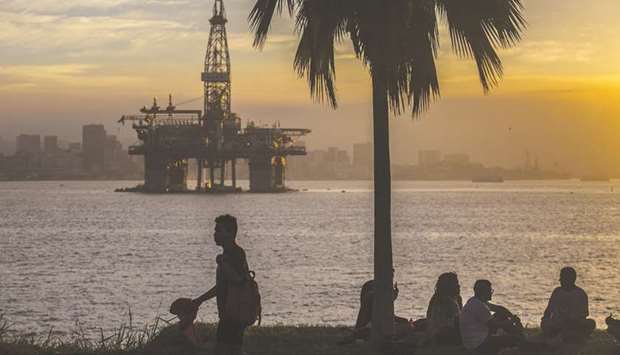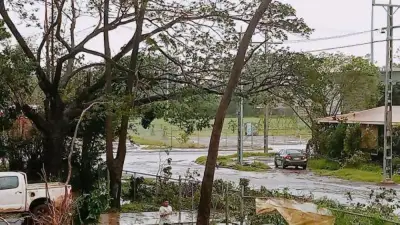The world’s most-ambitious oil drillers are opening a new exploration frontier at perhaps the worst possible time.
With a slew of large discoveries off South America’s northeast coast, Exxon Mobil Corp, Hess Corp, Apache Corp and their partners are set to unleash new supplies onto global markets increasingly awash in crude.
Apache is the latest American driller to surprise investors with a significant discovery in coastal waters near the Suriname-Guyana border. The Houston-based explorer may have tipped its hand that something big was coming when it brought France’s Total SA on board as a partner in the endeavour just weeks before Tuesday’s announcement. Nonetheless, Apache’s stock surged 27% for the biggest one-day advance in at least 40 years.
“It’s pretty remarkable when you think about the larger landscape in which these new supplies will come online,” said Gianna Bern, a former BP Plc oil trader who teaches finance at the University of Notre Dame. “At the same time, Apache and companies like that tend to assume very low prices before development so that the economics will be favorable” regardless of market fluctuations.
Although it could be years before the Suriname find comes online, the discovery comes at a time when traders already are bracing for the biggest influx from non-Opec producers in at least 15 years, according to JBC Energy.
The rally in Apache shares is a vote of confidence from holders that chief executive officer John Christmann’s management team can pump that oil so cheaply that it will turn a profit even if crude collapses to $30 or $25 a barrel, said Bern, author of Investing in Energy: A Primer on the Economic of the Energy Industry.
Hess enjoyed just such a boom last year when investors boosted the shares 65% because of the oil producer’s role as a junior partner in Exxon Mobil Corp’s staggering discoveries off Guyana.
Guyana and Suriname are not alone. New supplies are flowing, or will be shortly, from new wells in Norway, Canada, Mexico, Brazil and Colombia, Bern said. Brazil alone is forecast to add 200,000 to 300,000 barrels of daily supply this year, and only US shale is expected to expand at a faster rate, said Fernando Valle, an analyst at Bloomberg Intelligence.
Outside the Organization of Petroleum Exporting Countries, output of crude and byproducts known as gas liquids will increase by 2mn barrels a day this year, swamping the 1.2mn-barrel growth forecast, according to IHS Markit.
Brazil and Guyana alone are set to add more than 400,000 barrels of combined daily supplies to the market this year, a volume that would offset most of the auxiliary cuts agreed to by Opec and its allies in late 2019, said Stephen Beck, the Houston-based senior director of upstream at Stratas Advisors.
“We’ve been in a situation where too much supply is chasing too little demand since 2013,” said Jim Burkhard, vice president and head of oil market at IHS. “2020 is shaping up to be the same way.”
The wild card, though, is what transpires with Iraqi production in the aftermath of the US assassination of a top Iranian general, Burkhard said.
As Opec’s second-largest producer, any disruption to Iraqi output could upend markets. Crude futures surged above $70 a barrel in London on Monday on concern the attack would spark a wider conflict. Still, they remain almost 10% off the 2019 high touched in April.
In past decades, new discoveries weren’t viewed as an imminent threat to the supply-demand balance because they took upwards of a decade to bring into production. But technological advances now allow explorers to turn discoveries into producing assets in half that span, upsetting old maxims about the time horizons for new supplies.
Relative to shale fields or conventional onshore wells, offshore projects tend to be more resilient to volatile price movements because once the initial construction is finished, operational costs are so slim that “oil would have to get under $10 a barrel before they’d shut them in,” said Jim Krane, a fellow at Rice University‘s Center for Energy Studies in Houston.
“Once the ball is rolling, you plow full steam ahead. Damn the oil price,” Krane said. “Clearly that’s what’s happening in Guyana.”

People watch the sunset in front of a Queiroz Galvao SA offshore oil platform in the Guanabara Bay near Niteroi, Rio de Janeiro state, Brazil (file).


